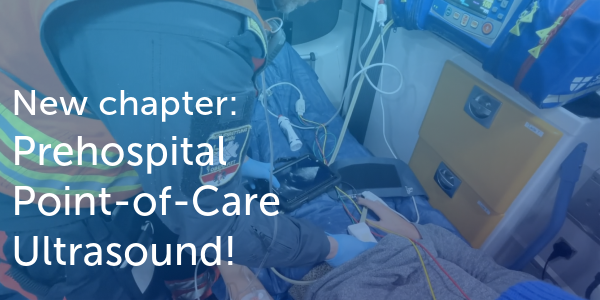5.3.2 Infection and dilated cardiomyopathy / myocarditis
Dilated cardiomyopathy may be caused by a wide spectrum of pathogens. These include viral, bacterial, parasitic, fungal, spirotricheal, and rickettsial infections. Viral infection is the most common cause of myocarditis. The predominant viral pathogens are parvovirus B19, adenovirus, coxsackie virus B, other enteroviruses, and influenza A. However, the spectrum of pathogens has changed over the decades and also varies geographically. For example, Trypanosoma cruzi, which causes Chagas' cardiomyopathy, is endemic in certain regions of South America (e.g. Argentina) and remains the leading cause of chronic systolic heart failure in these regions.
5.3.2.1 Presentation of myocarditis
Myocarditis may be manifested as fulminant to acute or even subtle infection. Echocardiography plays an important role in distinguishing between these types. Fulminant myocarditis is characterized by a distinct and rapid onset, with life-threatening impairment of hemodynamics (cardiogenic shock), marked myocardial inflammation, and edema. Echocardiography will demonstrate severely reduced left ventricular function, low cardiac output, and myocardial edema (thickened and echogenic myocardium).Some patients have biventricular involvement; right ventricular function is also reduced. Pericardial effusion is commonly seen. Left ventricular function usually recovers completely in fulminant myocarditis.
Video Platform Video Management Video Solutions Video Player A patient with acute myocarditis. Note that the left ventricle is not yet dilated. The patient also developed severe mitral regurgitation.Acute non-fulminant myocarditis has a more insidious course, followed by heart failure. Left ventricular function may be fully restored in these patients. Others develop chronic stable dilated cardiomyopathy or progress to end-stage heart failure.
Other causes of acute left ventricular failure must be excluded when establishing the diagnosis of acute or fulminant myocarditis. These include coronary artery disease (acute coronary syndromes), stress cardiomyopathy, or exacerbation of chronic heart failure.
When the distribution of regional wall motion abnormalities does not match a specific coronary territory, the condition may be indicative of inflammation or infiltrative disease rather than an acute coronary syndromeConfirmation or exclusion of myocarditis may be quite challenging in clinical practice. This is especially true of borderline myocarditis, which is associated with inflammatory invasion of the myocardium without evidence of necrosis or degeneration of myocytes. Although echocardiography may provide important information (presence of regional wall motion abnormalities, cardiac dilatation, regional cardiac hypertrophy), its diagnostic value is limited because many patients with less severe myocarditis have a normal echocardiogram, and many of the above mentioned echocardiographic findings are non-specific. Thus, other tests (i.e. troponin, molecular analysis of myocardial biopsy material), symptoms, and especially cardiac magnetic resonance (CMR) are needed to establish the diagnosis.
Inflammation most commonly affects the infero-lateral myocardium, whereas infiltration is rather diffuse (patchy) and non-subendocardial.5.3.2.2 Chagas' myocarditis
Chagas' disease is caused by infection with Trypanosoma cruzi (T. cruzi). T cruzi usually occurs in blood-sucking insects (kissing bugs) and small mammals that live in the southwestern part of United States, Mexico, Central and South America (Argentina, Chile). Transmission usually occurs via contact with lesions on the skin, mucosal surfaces, or the conjunctiva of parasites present in the faeces of the insect vector.
Cardiac involvement occurs in the chronic stage of the disease - quite often many years after infection. Myocarditis and dilated cardiomyopathy develop in a small number of these patients. Nevertheless, due to the high prevalence of infection, Chagas' cardiomyopathy is the most common cause of dilated cardiomyopathy in the above mentioned regions.
In patients with Chagas' myocarditis the echocardiogram may demonstrate global left ventricular dysfunction or segmental lesions such as regional myocardial thinning, hypokinesia, and aneurysms. Such lesions are most commonly observed in the apical and posterior wall.
5.3.2.3 HIV-associated myocarditis
HIV infection may also cause myocarditis. In a postmortem study of HIV-infected patients, myocarditis was established by histopathological criteria in more than 60% of cases. However, most of these patients have discrete and unspecific abnormalities on the echocardiogram. In general, patients with advanced forms of HIV infection are subject to a high risk of developing overt myocarditis. HIV-related myocarditis is associated with a poor prognosis, especially in patients with low CD4+ counts (<400 cells/mm3). These high-risk patients may develop severe left ventricular dysfunction, which could progress to advanced forms of dilated cardiomyopathy. It is sometimes unclear whether the HIV virus itself, antiviral treatment, or myocardial co-infection is responsible for systolic dysfunction.
Video Platform Video Management Video Solutions Video Player HIV-associated cardiomyopathy: speckle-tracking analysis shows reduced radial function